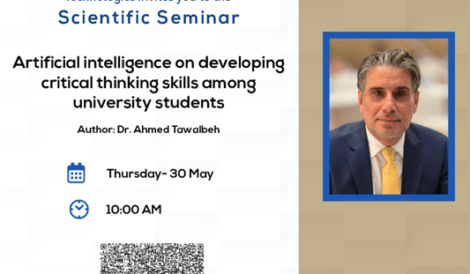Image created by AI
Dr. Abdulla Altaher
Assistant Professor of Digital Media at Gulf University
The current technological revolution has opened new horizons for freedom of thought, information exchange, and the evolution of media and communication. While it has contributed significantly to these fields, challenges such as privacy concerns, ethical dilemmas, and manipulation persist, especially within social media. These issues highlight the need for strengthening professional codes of conduct.
In this context, soccer developments have always influenced media and communication, adapting to each new technological advancement. Since Johannes Gutenberg’s invention of the printing press in 1440, followed by Samuel Morse’s telegraph in 1810 and Alexander Graham Bell’s telephone in 1876, the media industry has continually evolved. These inventions pushed media practices to more advanced levels, with modern technological innovations further influencing how media content is consumed, produced, and interacted with.
Today’s wave of media is a fusion of technology and thought, reminiscent of Jürgen Habermas’s assertion that science and technology have become ideologies, driving profound social change. Each new technological breakthrough brings with it fresh media models and values, reshaping communication.
Stepping back, the COVID-19 pandemic left a lasting impact on the role of technology in society, especially in sectors like distance education, e-commerce, and communication. In this context, the concept of Post-Interactivity Media emerged, representing a new frontier in digital media evolution. This phase transcends traditional user-content interaction, offering a more integrated and dynamic experience. Here, users do not merely engage with content; they become part of an interactive process that leverages artificial intelligence (AI), virtual reality (VR), and advanced analytics to create more personalized, immersive media experiences.
Key characteristics of post-interactive media include:
Hyper-personalization: AI analyzes user behavior to deliver tailored content based on individual preferences and interests.
Blending the digital and physical worlds: Augmented and virtual reality technologies create interactive environments that surpass conventional media.
Deep, sustainable interaction: Big data and AI enable real-time, continuous audience engagement.
Predictive interaction: Media not only responds to user actions but anticipates behavior, offering proactive experiences.
The concept of post-interactivity has developed through academic research and discussions surrounding media interactivity. This new paradigm marks a shift in media philosophy, moving away from a traditional mass audience approach to one that treats users as unique individuals, enhancing personal expression and creativity.
However, post-interactive media raises critical concerns about privacy and data collection. These platforms rely heavily on analyzing vast amounts of personal data from users across the internet, social media, and various websites. This presents challenges in maintaining user privacy, especially as AI technologies increasingly collect and analyze personal data. The potential misuse of this data, or violations of privacy, is a major concern, particularly with AI-driven predictions that target users based on behavioral patterns. This practice risks infringing on users’ rights and undermining their freedom to make independent decisions.
The AI role in content control also raises important questions. Algorithms that determine which content appears to users can introduce bias, leading to misinformation or manipulation of public opinion.
Additionally, the growing reliance on AI in media production brings into focus the tension between automation and human creativity. Can AI, while optimizing processes, suppress the creative potential of human contributors? This debate remains central to ongoing discussions among researchers.





